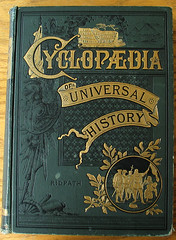Lots of books—especially, it seems, those of a more literary bent—focus on revealing backstory as unlocking a key in a mystery, whether it be finally understanding another person to the character finally discovering the truth about his/her own life. How is that different from “bad” backstory?
The answer may vary, but to me “bad” backstory is a.) delivered up-front in a chunk and/or b.) supposed to totally explain why the characters (especially bad guys and fractured protagonists) are the way they are, and thus justify their poor choices.
“Good” backstory, on the other hand, often isn’t something the main character knows yet. The main  character is searching for the rest of the story right along with us. If a POV character does know the whole story, s/he should have a reason to hide that from the other characters and the reader, instead of just withholding for withholding’s sake.
character is searching for the rest of the story right along with us. If a POV character does know the whole story, s/he should have a reason to hide that from the other characters and the reader, instead of just withholding for withholding’s sake.
This backstory must also be something worth waiting for. The premise of the novel rests on this character’s search for the truth—so that truth had better be worth reading the whole thing for. Trick endings might sell one book, but betrayed readers might be turned off forever.
But most important, perhaps, is what the backstory does. No matter what the specific events of the past or present in the book, discovering the truth should reveal some truth about the present story. It should help the character—and hopefully the reader—make sense of the world, and inform the character in some way greater than just the facts do.
That is, after all, the point of studying history, whether global or personal. We’re trying to understand where we fit in, what came before, and how that can guide us better. We want to know what we believe or feel or know has always been true. We want to know what truth is. And it’s not only the point of studying history—it can be the point of reading fiction, too.
What do you think? What defines the “right” kind of backstory?
Photo by Clever Cupcakes

 )
)


 5) Giving the protagonist miserable backstory. This is often done in order to excuse some unsympathetic behavior or attitude [and is also a common technique to try to make villains sympathetic]. Yeah, he hates women, but it’s because his mother abandoned him! And his foster mother beat him! And his aunt framed him for murder! And his first girlfriend trapped him into marriage by getting pregnant! And…
5) Giving the protagonist miserable backstory. This is often done in order to excuse some unsympathetic behavior or attitude [and is also a common technique to try to make villains sympathetic]. Yeah, he hates women, but it’s because his mother abandoned him! And his foster mother beat him! And his aunt framed him for murder! And his first girlfriend trapped him into marriage by getting pregnant! And…


